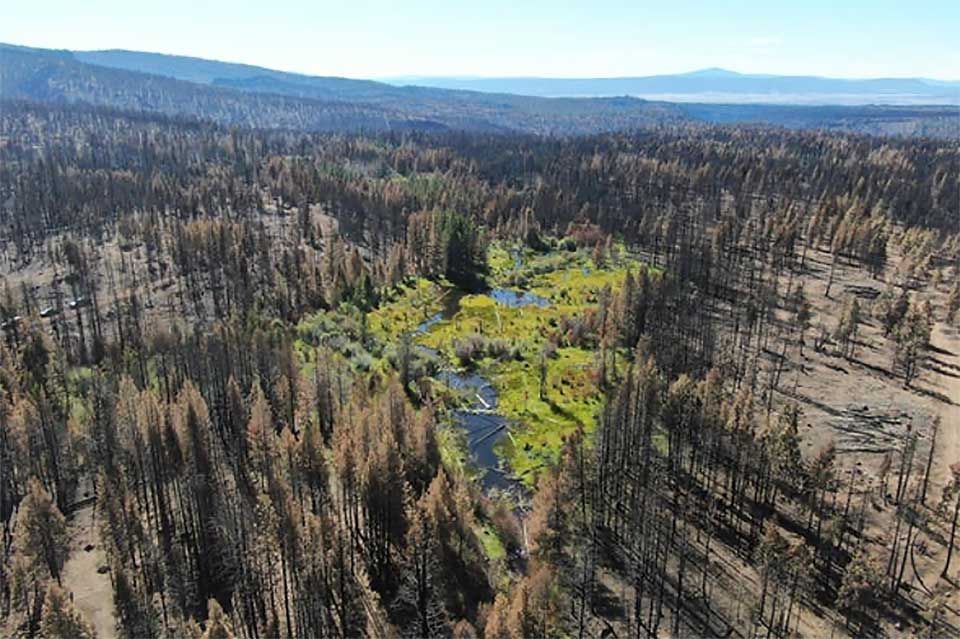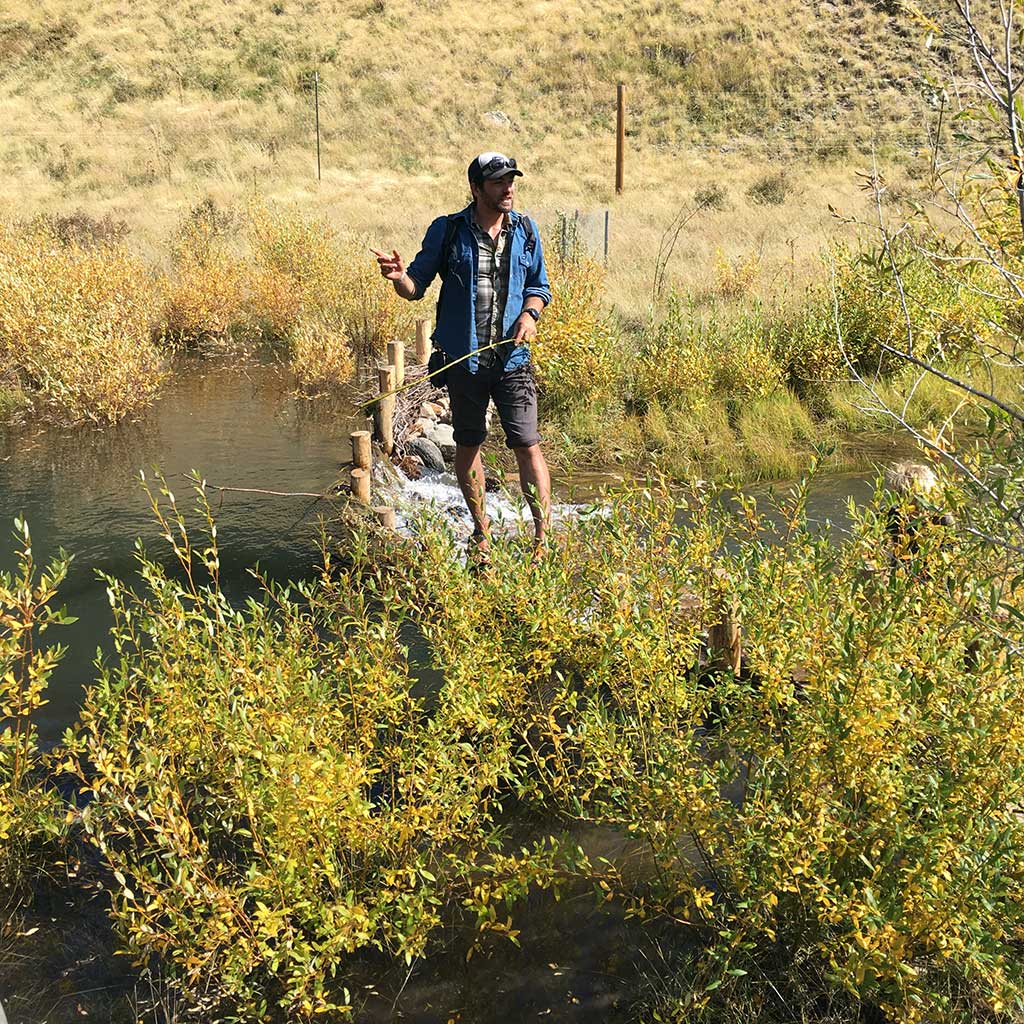Benefits of Beavers
Surface water
Beavers don’t technically “create” water, but it sure can seem like it. By slowing the flow of water, beavers make more water more available later in the summer and fall. Whether from snowmelt or summer monsoon, water in degraded and eroded watersheds can quickly flow downstream faster than it historically did. With beaver infrastructure slowing things down, water’s journey takes much longer and can keep more miles of waterway more wet later in the year.
Groundwater
Aquifers are like sponges underground. They store water and act as reserves during drought and dry periods. According to the Environmental Protection Agency, roughly 87% of New Mexico’s public water supply comes from groundwater. Aquifers in New Mexico are declining–especially in the eastern portion of the state.
Beaver dams and ponds allow water to seep down through the water table and recharge aquifers. As water slows and collects, it better saturates the ground underneath. So beavers can help us with water supply now and in the future.

Water quality and temperature
Beaver dams store sediment and pollutants as particulate matter sinks to the bottom of the beaver pond or is strained through adjacent soils and riparian zones. Beaver dams can filter out unwanted nitrogen, a compound which can lead to overgrowth of algae and oxygen level reductions. So, water coming out of beaver complexes is often cleaner than it otherwise would be. And because beaver dams can help reduce streambank erosion (by slowing energetic, high flows), they even help to clean water downstream.
Measuring the impacts of beavers on water temperature is a complicated business. Water temperature is affected by a slew of environmental factors. But, there is reason to believe that in most cases, beavers may lower stream temperatures – especially in hot summers. Beavers usually promote the health and abundance of riparian vegetation – which creates more shade. And beaver complexes often increase groundwater exchange, which can help lower temperatures as well.
Wildfire
Lush and soggy beaver complexes are proving to be critical to mitigating wildfires. By creating natural firelines, beavers can help stop and slow the spread of wildfires. Joe Wheaton, a geomorphologist at Utah State University says, “It’s really not complicated: water doesn’t burn.”
And wetlands and ponds are refugia for plant and animal communities to survive fires and then begin to re-establish throughout the landscape.
Among the impacts of wildfires is post-burn flooding. And beavers, by slowing and storing water, can mitigate what can otherwise be a violent–and sometimes dangerous–torrent.

Sounds too good to be true? Here are just a few recent headlines:
- How beavers became North America’s best firefighter – National Geographic
- Beavers offer natural solution to fighting wildfires – Washington Post
- Firefighting beavers: Fighting fires, one beaver dam at a time – U.S. Forest Service
Habitat and biodiversity
According to the U.S. Fish and Wildlife Service, wetlands make up only 6% of the land on earth, but 40% of all plant and animal species live or breed in wetlands. So, they’re kind of important! And beavers create, maintain, and improve wetlands habitat. Chances are that if you have seen a wetland in New Mexico, it’s where a beaver pond used to be. Wetlands are especially important for birds, reptiles, and amphibians. But nearly any wildlife can be found utilizing wetlands.
Beavers are also great at creating and improving aquatic habitat. By complicating waterways, making refugia for prey species, and creating nutrient-rich pools, beavers provide for both aquatic invertebrates and fish species. Beaver ponds can act as veritable fish nurseries and have been found to be especially important to salmonids like trout.
Restoration
Beavers are our best partner for maximizing on-the-ground restoration work. While humans can do quite a bit of good healing degraded waterways and rehabilitating wildfire-charred landscapes, most of that work can be made much more impactful by the presence of beavers. In many cases, beavers will work faster and better (and much cheaper!) than we can, and unlike most restoration funding sources that limit projects to several seasons at most, beavers will work with stream reaches for decades. This is particularly important in streams that have been deeply entrenched into their historic floodplain and require consistent aggradation over a longer period of time to regain connectivity.

Conversely, beavers sometimes need the helping hands of humans to give them a leg up in returning to watersheds from which they have been absent. Whether it’s building beaver dam analogs (BDAs) or planting native food sources like willow, humans can often lay the groundwork for beavers to make their return.
Carbon
Along with helping to mitigate many of the symptoms of climate change, beavers may also help get at the root cause. Beaver-inhabited meadows are carbon sinks, and can store large amounts of greenhouse gasses. But when beavers leave meadows–or more likely, are removed by humans– science indicates that those meadows may release carbon dioxide rather than store it. The scope of beaver trapping in North America during the height of the fur trade may have had a significant global climate impact.
